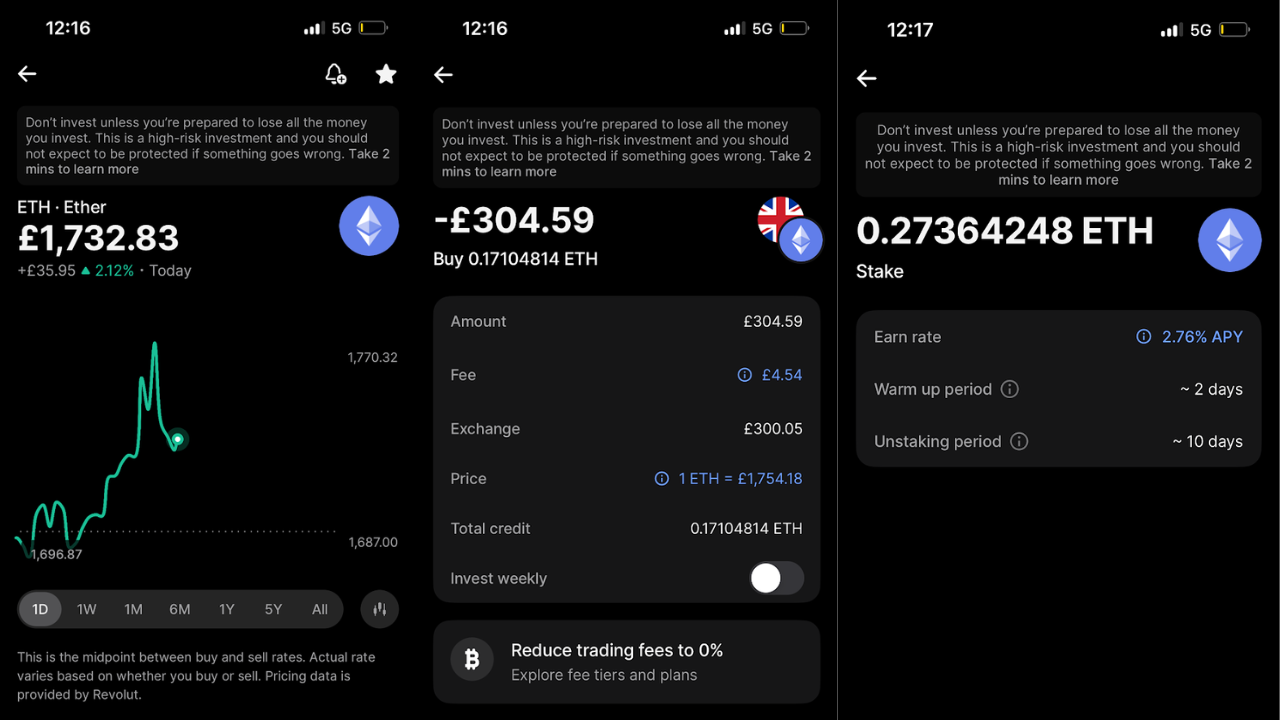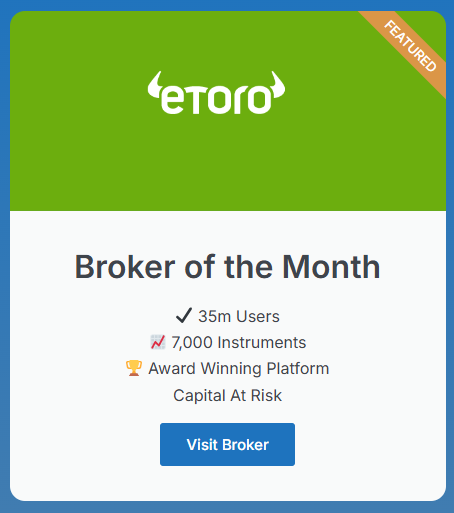Revolut Crypto Staking Expert Review: Reward Based Crypto Ownership

Account: Revolut Crypto Staking
Description: Revolut offers crypto staking for supported proof-of-stake (PoS) tokens, allowing users to earn rewards while securing blockchain networks. Supported assets include ETH, ADA, DOT, SOL, POL, and XTZ. Staking rewards are variable, with Revolut taking a commission. While convenient, staking carries risks, including price volatility and potential penalties.
Is Revolut Good For Crypto Staking?
Revolut’s crypto staking feature lets users earn rewards by staking supported PoS tokens including Ethereum (ETH), Cardano (ADA), Polkadot (DOT), Solana (SOL), Polygon (POL) andTezos (XTZ), which have done quite well recently following the announcement of the US crypto strategic reserve.
When you have a crypto account, Revolut automatically opts you in automatically (but this depends on where you live).
Fees: After you’ve paid Revolut’s commission for buying the crypto Revolut also take a pretty hefty slice of your staking rewards, which they have just increased to:
Ether: 25%
Cardano: 30%
Pokadot: 30%
Tezos: 30%
Solana: 30%
Polygon: 30%
Revolut’s staking commission is relatively high compared to exchanges like Uphold who charge between 20% and 25%, or Kraken who charge between 10% and 20%.
App & Platform: It’s very simple to stake crypto on Revolut. When I tested the process, I had some Bitcoin on account (which can’t be staked) so sold that and bought some Ethereum, which Revolut pays up to 2.76% rewards on, a fair bit better than the dedicated crypto exchange, Uphold, who only pay 2.1% on Ether at the moment.
There is a 2 day “warm up” period so you don’t earn rewards straight away, and an unstaking period so you are locked in for 10 days before you can claim it back.
Should you stake crypto on Revolut?
If you’re a buy and hold crypto investor why not? Obvioulsy there is the risk that the entire crypto industry will fall apart, but if you don’t plan to sell your crypto anytime soon, you may as well put it to work. The main risk though is that if the market crashes and you can’t unstake it to sell.
But (as with all crypto investing) you could lose all the money you invest. There is a risk of losing money or any cryptoassets you purchase due to risks such as cyber-attacks, financial crime and firm failure. Staking cryptoassets involves a risk of slashing. A potential penalty (loss of assets) due to validator non-compliance.

Pros
- Easy-to-use app
- Lots of cryptos
- Regulated provider
Cons
- 2 day warm-up period
- Lock-up period risk
- Rewards not guaranteed
-
Rewards
(4)
-
Market Access
(4)
-
App & Platform
(5)
-
Customer Service
(4)
-
Research & Analysis
(4)
Overall
4.2
Richard is the founder of the Good Money Guide (formerly Good Broker Guide), one of the original investment comparison sites established in 2015. With a career spanning two decades as a broker, he brings extensive expertise and knowledge to the financial landscape.
Having worked as a broker at Investors Intelligence and a multi-asset derivatives broker at MF Global (Man Financial), Richard has acquired substantial experience in the industry. His career began as a private client stockbroker at Walker Crips and Phillip Securities (now King and Shaxson), following internships on the NYMEX oil trading floor in New York and London IPE in 2001 and 2000.
Richard’s contributions and expertise have been recognized by respected publications such as The Sunday Times, BusinessInsider, Yahoo Finance, BusinessNews.org.uk, Master Investor, Wealth Briefing, iNews, and The FT, among many others.
Under Richard’s leadership, the Good Money Guide has evolved into a valuable destination for comprehensive information and expert guidance, specialising in trading, investment, and currency exchange. His commitment to delivering high-quality insights has solidified the Good Money Guide’s standing as a well-respected resource for both customers and industry colleagues.
You can contact Richard at richard@goodmoneyguide.com





